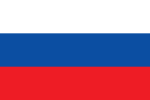Incheba

Incheba (Expo) (formerly stylized as Incheba €XPO) is a congress and exposition centre located in the Petržalka borough of Bratislava, Slovakia, just near Nový Most bridge. It includes multi-use exhibition halls, a parking lot with 4,500 places, a main building 85.6 meters high and the Hotel Incheba. The fair program is oriented to areas such as construction, tourism, gastronomy, chemical industry, automobile industry, cosmetics, fashion, medical equipment and arts. The Coneco, Incheba, Slovmedica and Slovfarma fairs have been included in the UFI calendar. It is also used for events such as concerts, conferences and tournaments. In 2006, more than a million people visited Incheba, of which 700,000 came to a total of 49 expositions, shows and fairs and 338,000 to other events.
Excerpt from the Wikipedia article Incheba (License: CC BY-SA 3.0, Authors, Images).Incheba
Viedenská cesta, Bratislava Dvory (District of Bratislava V)
Geographical coordinates (GPS) Address External links Nearby Places Show on map
Geographical coordinates (GPS)
| Latitude | Longitude |
|---|---|
| N 48.13362 ° | E 17.100982 ° |
Address
Incheba Expo Bratislava (Trade Fair Bratislava)
Viedenská cesta 3-7
851 01 Bratislava, Dvory (District of Bratislava V)
Region of Bratislava, Slovakia
Open on Google Maps









